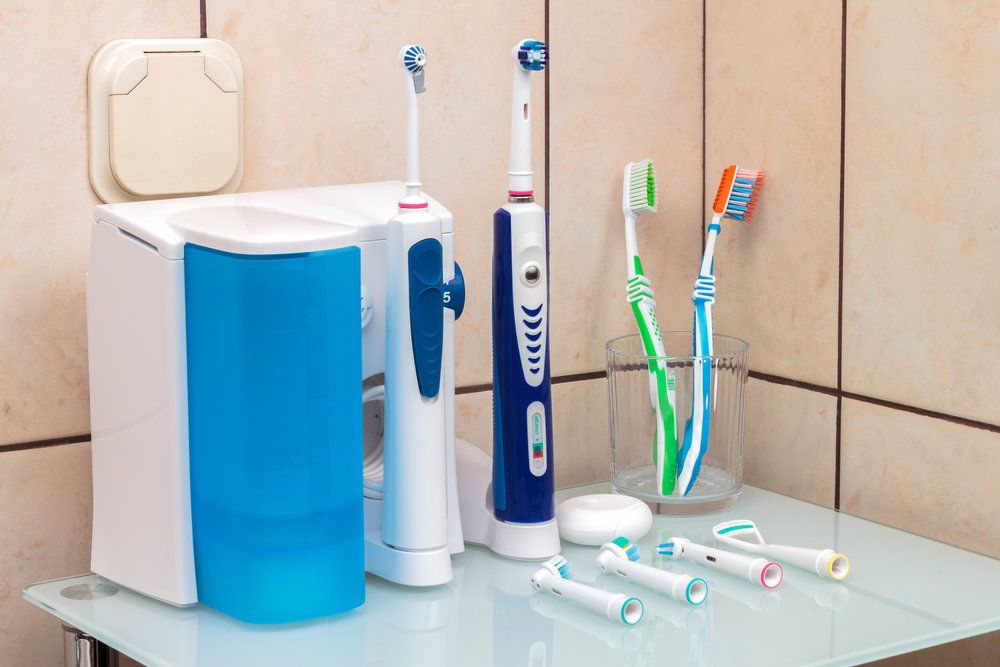History of the Toothbrush
 Many of the dental technologies and services that people depend on today have been introduced within the past several decades. However, while there are multiple new advances in dental care, the idea of keeping the teeth clean has been around since ancient times.
Many of the dental technologies and services that people depend on today have been introduced within the past several decades. However, while there are multiple new advances in dental care, the idea of keeping the teeth clean has been around since ancient times.
Although ancient civilizations didn’t have professional dental care or general dentistry services such as dental exams and cleanings, evidence shows they did care about their oral health. In fact, ancient civilizations even used toothbrushes to clean the teeth.
The types of toothbrushes that most people currently use are pretty advanced, but they are evolved from a design that dates back to 3000 BC. The history of the toothbrush contributed to the modern brushes our Ridgewood, NJ patients count on today to maintain the health and beauty of their smile.
Ancient Toothbrushes
Thanks to artifacts found by various archeologists, we know that a type of toothbrush was being used as far back as 3000 BC. An excavation of an Egyptian tomb led to the discovery of a device that is now known as a chew stick.
While the chew stick differs greatly from a modern toothbrush, it is obvious that it served the same purpose. The chew stick was a twig that had frayed ends resembling bristles, and a thin sharp end on the other side that resembled a toothpick. Chew sticks were also mentioned in Chinese records dating around 1600 BC and continue to be used today in many parts of Africa.
The Evolution of the Toothbrush
The first toothbrush design that resembles the modern brushes we use today originated in the Tang Dynasty of China. Although this toothbrush looked similar, with a long handle and a set of bristles on the end, the materials used to fabricate the toothbrush were very different from those used today. The handles were made of bamboo or bone, and the bristles were made of firm hog’s hair.
Chinese travelers brought the toothbrush to Europe, and it was widely introduced in the 17th century. However, Europeans found that the hog’s hair used to create the toothbrush bristles were too firm. They preferred that the toothbrush bristles be made out of horse’s hair, which was much softer. In 1780, a toothbrush of this design was mass-produced in Europe.
Mass production of toothbrushes began in the United States in 1885. These toothbrushes were also typically fabricated with a bone handle and animal hair bristles. However, this design evolved quickly. During the 1900s, manufacturers in the United States began making toothbrush handles out of celluloid. Animal hair was not the ideal material for bristles, because it held on to bacteria, and tended to fall out of the toothbrush. In 1938, DuPont introduced nylon toothbrush bristles, and this became the new norm.
The Modern Toothbrush
Since the 1900s, there haven’t been any major changes in the design of the basic toothbrush. However, people today have a lot more choices regarding the angle of the toothbrush head, the firmness of the toothbrush bristles, the contour of the bristles, and the shape and appearance of the toothbrush handle. These small differences allow each individual to choose a toothbrush that is best suited to his or her unique needs and desires.
The most notable modern advancement has been the introduction of the electric toothbrush. The first electric toothbrush was invented in 1954 in Switzerland. The electric toothbrush made it to the American market in 1960. Electric toothbrushes have moving bristles that rotate in different directions to provide a thorough cleaning.
Contact Us
The toothbrush is the greatest personal tool a person can use to clean the teeth. However, a toothbrush cannot take the place of professional dental care. If you are looking for an experienced dentist to provide you with the professional dental services that will enhance the health and beauty of your smile, contact us at your earliest convenience to learn more about the treatments offered at Ridgewood Dental Associates.






